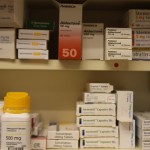2 ONC studies show EHR use growth, concerns over meaningful use
Despite criticisms and issues, more physicians and hospitals are using electronic health care records than ever before. Two studies were recently published in the journal Health Affairs and conducted by the U.S. Department of Health and Human Services' Office of the National Coordinator for Health Information Technology that detailed the increased use of EHRs.
Findings
While both studies used information collected by the U.S. Centers for Disease Control and Prevention's National Center for Health Statistics and the American Hospital Association in 2013, one of them found that during that year, 78 percent of office-based physicians reported that they adopted an EHR system. Furthermore, 48 percent of all physicians had an EHR system with advanced functionalities in 2013. When compared to 2009 data, the studies found that the adoption rate doubled in four years.
The other study's researchers analyzed data from an AHA survey to find that 59 percent of hospitals use comprehensive and basic EHR systems, with 30 percent using basic EHR software and about 25 percent using advanced programs. The main reason for hospitals use these health care solutions is in order to record vital signs at, which about 95 percent chose as an answer, while just over 90 percent of respondents track medications using electronic medication administration records.
"Patients are seeing the benefits of health IT as a result of the significant strides that have been made in the adoption and meaningful use of electronic health records," stated Karen DeSalvo, M.D., M.P.H., national coordinator for health information technology. "We look forward to working with our partners to ensure that people's digital health information follows them across the care continuum so it will be there when it matters most."
Meaningful use statistics
While the numbers regarding EHR use are promising, the studies' data is not as reassuring when analyzing providers' abilities to achieve stage 2 of meaningful use of the Medicare and Medicaid EHR incentive programs. For stage 1, 75 percent of eligible professionals demonstrated meaningful use, and 91 percent of hospitals have done the same.
However, only about 5 percent of hospitals have demonstrated all 15 requirements for stage 2. The study found that a majority have the capability to complete all criteria, yet 10 percent of hospitals provide patients with online access to view, download and transmit information in regard to their hospital admission.
Physicians fair slightly better, as about 25 percent allow patients to view and download information from their medical records, while 58 percent provide patients with clinical summaries for each visit. However, over 40 percent are able to perform the former, and almost 70 percent reported having the capability to do the latter. The study also found that 39 percent of physicians participate in health information exchanges with other practices, and 14 percent share data with hospitals, while HIEs are a criteria for stage 2.
Researchers suggested that the creation of new policies or procedures could increase HIE rates and patient engagement, as well as ensure that all hospitals put more effort into achieving meaningful use of EHR systems.



